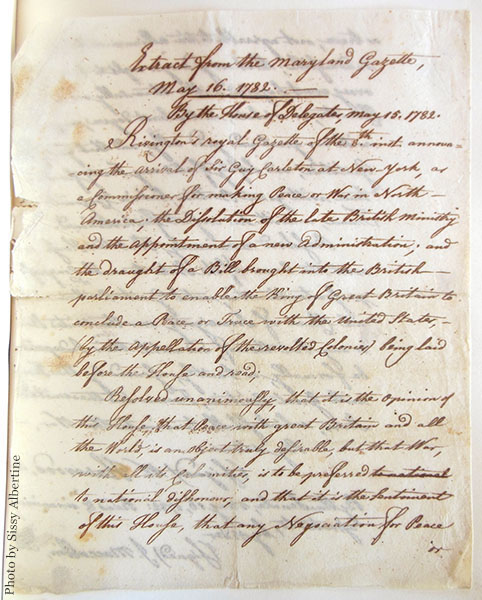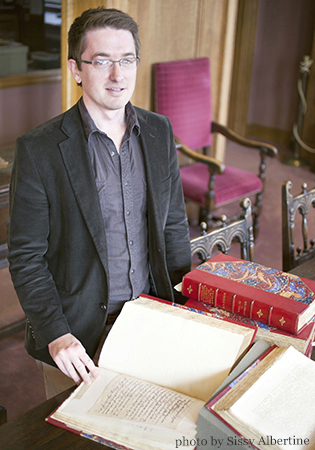Revolutionary War documents discovered in LSU Libraries
Fifty-seven original letters and other signed documents related to the American Revolution have been discovered in the LSU Libraries' Special Collections. The materials include documents signed by or sent to several members of the Continental Congress, three signers of the Declaration of Independence (Samuel Huntington, George Read, and Benjamin Harrison), and other politicians, diplomats, and military leaders, including Generals Henry Knox, Arthur St. Clair, and Benjamin Lincoln, Washington's second in command, who formally accepted the British surrender at Yorktown in 1781.
Michael Taylor, Assistant Curator of Books for the LSU Libraries' Special Collections, came across the materials. He says that an unidentified collector added them to a large set of facsimile reproductions of Revolutionary War manuscripts produced by the American bibliographer B. F. Stevens in the 1890s. The original documents went unnoticed, Taylor believes, because they were interspersed among the 2,107 facsimiles, which were published in 24 volumes as B.F. Stevens's Facsimiles of Manuscripts in European Archives Relating to America, 1773-1783. The collector also added more than four hundred engravings to the volumes, depicting individuals and events associated with the Revolution.
"In the 19th century, people often 'extra-illustrated' books by inserting prints, letters, autographs, newspaper clippings, and anything else that supplemented the text," Taylor says. He adds that the materials are a good example of how people collected "relics" of the Revolution. "Some of the letters are interesting in themselves, but I think they are more interesting as a group. How did the people who fought the Revolutionary War go from being ordinary men and women to national icons? How did America create its own mythology? These materials tell us something about that process."

Taylor notes that even mundane items in the collection shed light on America's founders. His favorite document is thought to have been made for Benjamin Franklin, probably by one of his secretaries. Known as a press copy, it was a precursor of the photocopy. "The paper is highly absorbent and as thin as tissue paper," Taylor explains. "When it was pressed against a letter that had been dampened, it soaked up some of the ink, producing an exact copy." The technique was invented in England around 1780 by James Watt, who is best known for his work on the steam engine. Franklin, a famous inventor himself, was among the first to use it. The document in LSU's collection (a passage copied out by hand from a contemporary news magazine, the Maryland Gazette) has a watermark indicating that the paper was made by James Watt.
"This is just one example of the many exciting surprises that Special Collections staff and our visiting researchers find almost every day when working with our collections," Jessica Lacher-Feldman, Head of Special Collections, commented. "Whether for teaching, research, student and faculty recruitment, or just personal curiosity, the library is a remarkably rich resource that benefits the university, the broader community, and in fact the world."
The LSU Libraries Special Collections, in Hill Memorial Library, is free and open to the public. For more information, contact the library at (225) 578-6544 or by email at special@lsu.edu.

